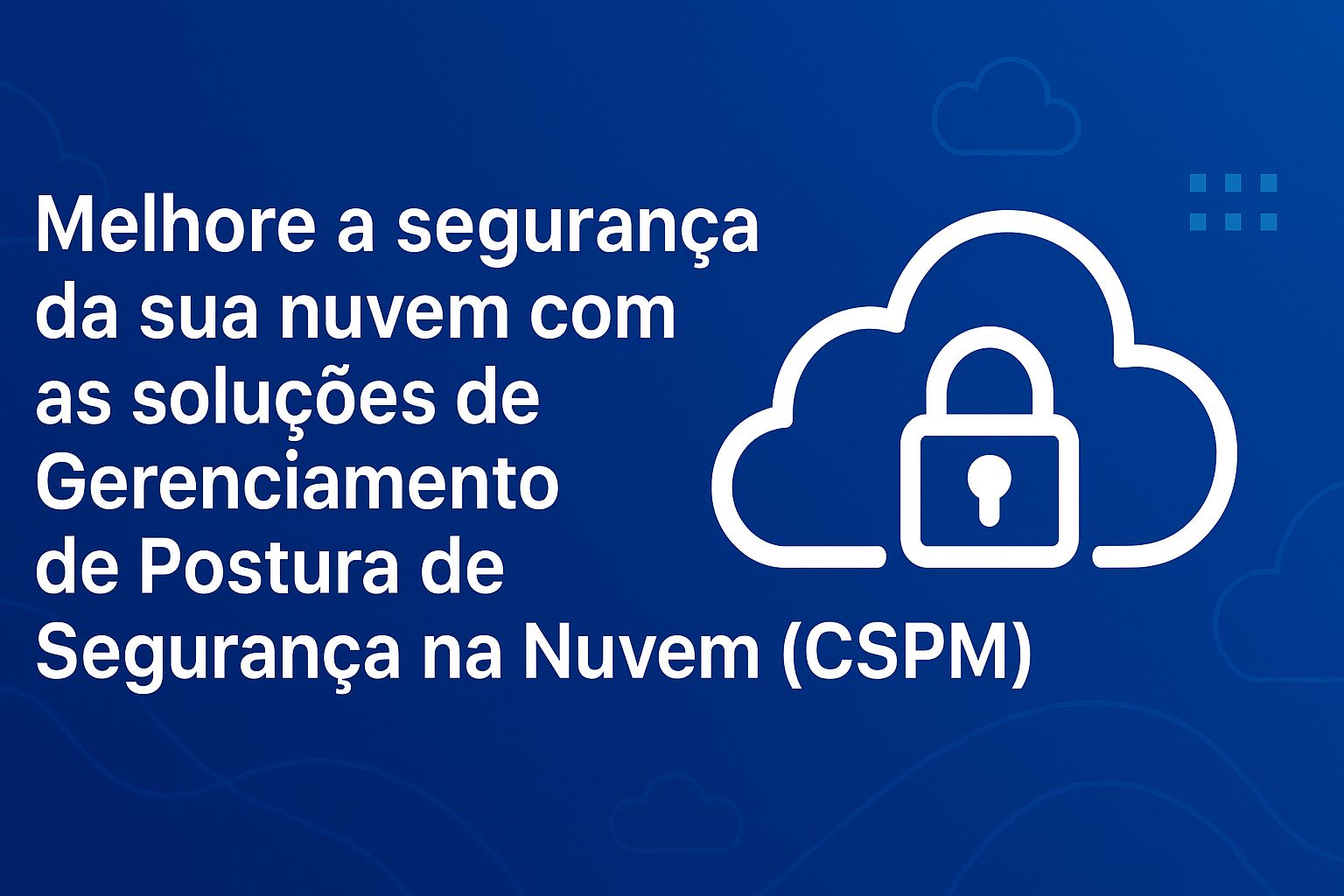Improve Your Cloud Security with Cloud Security Posture Management (CSPM) Solutions
Understand what CSPM is, its benefits, risks of not having this solution, and best practices to implement effective security in cloud environments.
Sapiens IT Team
Written by engineers who build before they write.

Improve Your Cloud Security with Cloud Security Posture Management (CSPM) Solutions
Introduction: The Challenge of Security in Cloud Environments
Migrating to the cloud is relatively simple, but effectively protecting the environment is one of the biggest challenges companies face.
One of the main problems is the lack of deep knowledge about cloud resources. Many organizations don’t know exactly how services work, which configurations are critical, or which permissions really need to be applied. This leads to misguided decisions, such as “blocking everything” and gradually releasing permissions without any structured criteria. Although this approach may seem safe, it often creates operational bottlenecks and doesn’t guarantee that the environment is adequately protected.
Another critical point is the absence of well-defined corporate security processes before cloud adoption. When a company tries to establish controls only during or after migration, gaps, inconsistencies, and problems arise that could be avoided if the strategy were planned in advance. This includes everything from defining access policies to regulatory compliance governance.
It is in this context that Cloud Security Posture Management (CSPM) solutions gain relevance. They help companies identify failures, correct misconfigurations, and maintain compliance at scale.
What You Will Find in This Article
In this guide, we will explore:
- What CSPM is and why it is essential for any cloud security strategy.
- The main benefits of adopting CSPM (with practical examples).
- The risks faced by companies without CSPM (with a real case).
- Best practices for effectively implementing a CSPM solution.
- How CSPM integrates with other security and compliance strategies.
What is CSPM (Cloud Security Posture Management)?
CSPM is an approach and set of tools that continuously monitor cloud configurations to identify security risks, vulnerabilities, and compliance violations.
In practical terms, CSPM operates on three main pillars:
- Visibility: provides a centralized inventory of resources and their configurations.
- Monitoring and detection: identifies misconfigurations, insecure accesses, and potential exposures.
- Remediation and automation: suggests or automatically applies remediations, reducing response time.
Benefits of Adopting CSPM (with Practical Examples)
1. Risk Reduction – Prevents Accidental Data Exposures
- Example: a storage bucket configured as “public” can be detected and automatically corrected before sensitive data becomes accessible.
2. Continuous Compliance – Facilitates Adherence to Standards Like GDPR, LGPD, PCI-DSS, and ISO 27001
- Example: if a rule requires encryption at rest, CSPM alerts or corrects unencrypted volumes in real-time.
3. Operational Efficiency – Automates Tasks That Would Be Impossible to Perform Manually in Complex Environments
- Example: instead of manually checking thousands of user and role permissions, CSPM applies policies and generates reports in seconds.
4. Security Scalability – Grows Along with the Company’s Cloud Infrastructure
- Example: newly provisioned resources are automatically evaluated by the same security rules, without manual intervention.
The Risks of Not Having CSPM (with a Real Example)
Without CSPM, organizations are vulnerable to serious incidents.
- Misconfigurations: one of the most common causes of cloud data breaches.
- Regulatory fines: compliance failures can generate million-dollar costs.
- Reputation loss: customers and partners lose trust after an incident.
Real Example
In 2019, data from millions of Capital One customers was exposed due to a misconfiguration in a cloud application firewall. The incident cost the company hundreds of millions of dollars in fines and repairs. This case shows how an apparently simple failure could have been avoided with continuous security posture monitoring.
Best Practices for Implementing CSPM
- Define clear security policies before migration.
- Automate alerts and corrections whenever possible.
- Integrate with DevOps/SRE pipeline to prevent problems before production.
- Adopt a multi-cloud approach when applicable, ensuring consistency across different providers.
- Train teams to interpret alerts and apply continuous improvements.
How CSPM Integrates with Other Security and Compliance Strategies
CSPM is not an isolated tool: it is part of a broader security ecosystem.
Cloud Workload Protection (CWP)
While CSPM ensures that resources are correctly configured, CWP protects workloads and running applications (VMs, containers, serverless functions).
Identity and Access Management (IAM)
CSPM helps validate whether permissions follow the principle of least privilege, but should work together with Zero Trust policies.
SIEM/SOAR
CSPM findings can be sent to monitoring and response platforms for event correlation and incident automation.
Compliance and Auditing
CSPM provides continuous reports that simplify external audits, reducing time and costs.
In summary, CSPM functions as the base layer of cloud governance and security, on which other protection solutions rely.
Conclusion
Cloud security should not be treated as an “appendix” after migration. The lack of knowledge about resources, the absence of clear processes, and the complexity of multi-cloud environments make Cloud Security Posture Management (CSPM) indispensable.
With it, companies gain visibility, automation, compliance, and resilience, reducing risks and strengthening trust with customers and partners.
If your organization is already migrating or plans to migrate to the cloud, the best time to adopt CSPM is now—before a simple failure becomes a critical problem.
Written by the Sapiens IT team — engineers who build before they write.